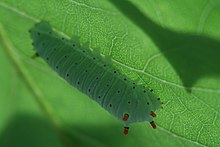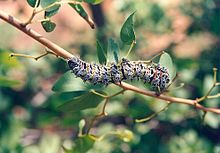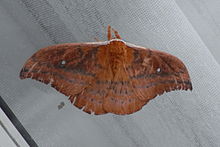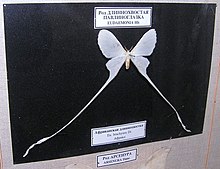Saturniinae
Some exhibit realistic eye-like markings, whilst others have adapted the eyespots to form crescent moon or angular shapes or have lost their wing scales to create transparent windows.
The Saturniinae is an important source of wild silk and human food in many different cultures.
[2] The saturniine genera, approximately 169 in number, are divided into four major and one minor (Micragonini) tribes.
Adults in the Saturniinae typically live about 5–12 days and are mostly nocturnal, excluding males in four of the subfamilies.
They typically pass through five larval instars (excluding egg, pupa and adult), although some may have more.



